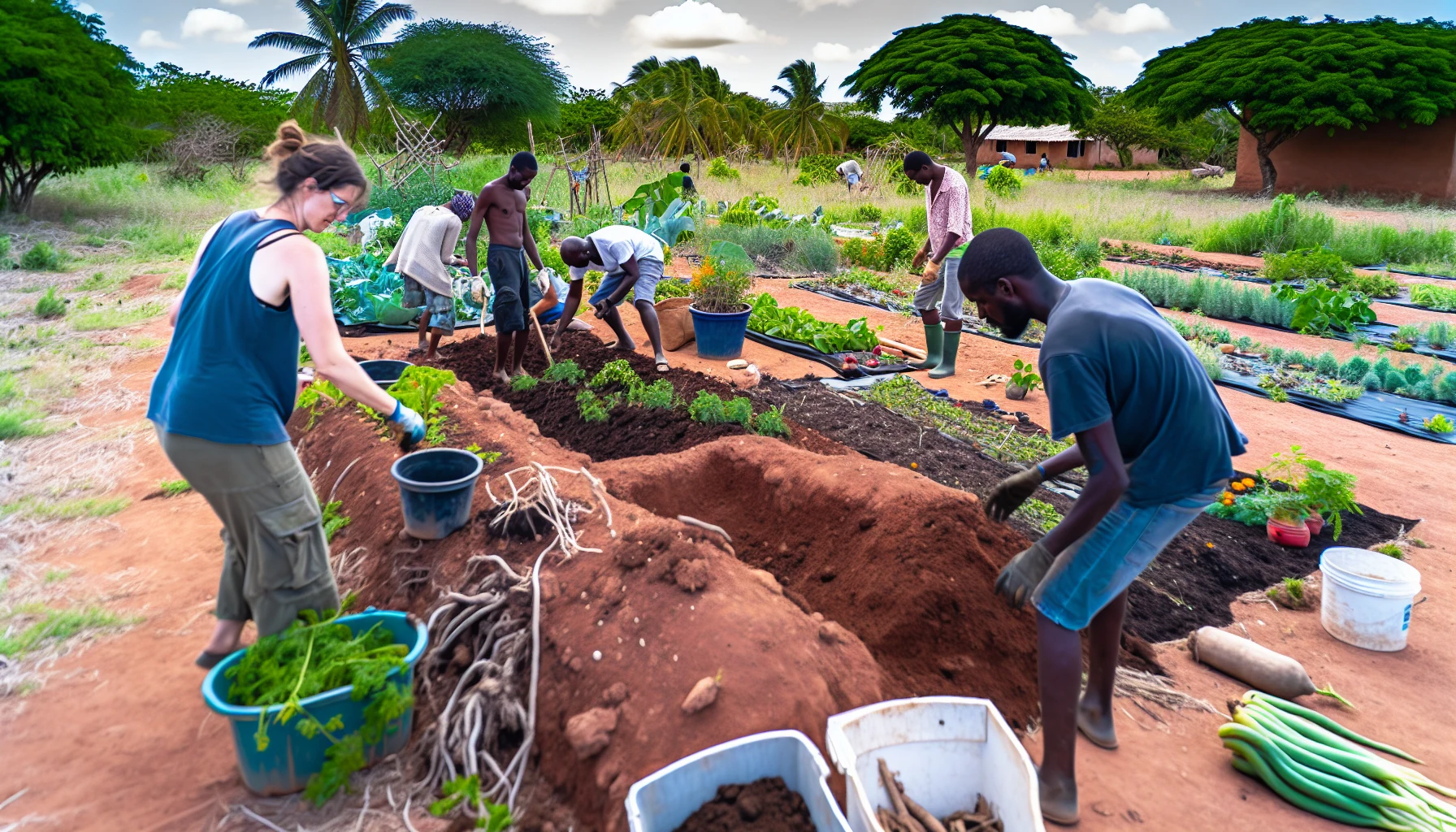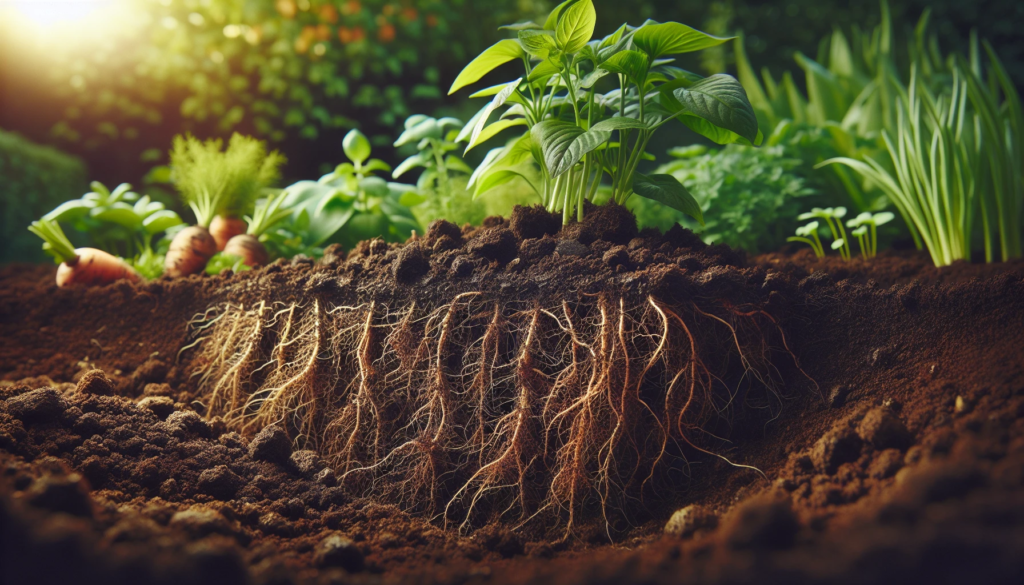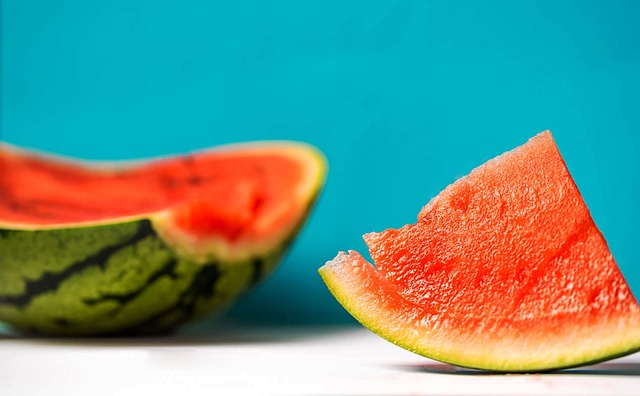Are you ready to transform your life and the environment around you? Permaculture design courses offer an incredible opportunity to learn sustainable practices that can lead to a more resilient and productive world. In this blog post, we will explore the exciting world of permaculture, its philosophy, and practical applications. Let’s embark on this learning journey together and discover the potential of online permaculture courses to create lasting change!
Key Takeaways
Excitingly explore the innovative approach of Permaculture Design and learn how to craft a sustainable, self-sustaining ecosystem!
Discover pathways to permaculture education – from online courses to in-person workshops – and gain knowledge & skills for sustainable living!
Assess teaching styles & course formats, find your focus, join our community building efforts and open up possibilities for ecological restoration with Permaculture Design!
Understanding Permaculture Design

Learned permaculture is an innovative design approach focusing on growing food efficiently while maintaining ecological integrity. Fundamentally, permaculture involves identifying connections between living systems and incorporating varied practices and strategies into our activities, while staying aware of these systems.
Considering this approach is of utmost importance. Its goal is to help us make smart and exciting choices on how to design and interact with the environment around and within us, using ecological design principles to create sustainable and regenerative systems.
As a method of sustainable agriculture, permaculture is gaining traction due to its reliance on nature’s pre-established ecosystems and its aim to establish a closed-loop system where food can be grown in harmony with nature.
The Philosophy Behind Permaculture

Permaculture philosophy underscores collaboration with nature, instead of opposition, to establish sustainable and regenerative systems. This approach was developed in the early 1970s in Tasmania, Australia, and has since evolved and influenced various fields such as architecture, community planning, and personal development.
Permaculture aims to create self-sustaining systems that cooperate with nature, endorsing biodiversity, soil health, and regenerative practices. This holistic design system challenges traditional Western agricultural practices that separate humans from nature, offering a refreshing alternative for a more sustainable future.
Core Practices in Permaculture
The core practices in permaculture design guide our actions, ensuring that we work in harmony with the natural environment. These practices include:
Observing and interacting
Catching and storing energy
Obtaining a yield
Applying self-regulation and accepting feedback
Using and valuing renewable resources
Producing no waste
Designing from patterns to details
Integrating rather than segregating
Using small and slow solutions
Valuing diversity
Creatively using and responding to change
Application of these principles aids in the creation of sustainable and regenerative systems which benefit not only the environment, but also our well-being and that of future generations.
Permaculture’s Role in Sustainable Systems

Permaculture holds a significant role in establishing true sustainability for various life aspects such as food production, water management, and energy conservation.
It contributes to sustainable food production by creating beneficial relationships between human and natural systems, increasing production, promoting resilience and self-sufficiency in communities and ecosystems, and improving the nutritional value of crops.
Permaculture principles help us manage water systems sustainably by focusing on intelligent landscape design and conservation techniques to ensure the efficient use of water resources. Additionally, permaculture principles show us how to conserve energy by taking advantage of various forms of energy available, such as:
wind
sun
water
soil
plants
human resources
By maximizing these energy sources, permaculture contributes to energy conservation.
Crafting Your Own Ecosystem: Permaculture Design Principles

Permaculture design principles direct us towards creating sustainable ecosystems that coordinate harmoniously with nature. By observing and interacting with the environment, we can understand natural patterns and design efficient systems that benefit both humans and the environment through the permaculture design process.
Catching and storing energy from various sources helps us create self-sustaining systems that reduce our reliance on non-renewable energy sources and promote self-sufficiency within the ecosystem.
Valuing diversity in plants, animals, and ecosystems promotes resilience and productivity, ensuring that our permaculture systems can adapt to changes and provide a sustainable yield.
Observe and Interact

Observation and interaction form the basis of permaculture design, enabling us to comprehend the present conditions of a site and identify patterns, relationships, and opportunities for sustainable design solutions.
By engaging with nature and observing patterns in the natural world, we can mimic reliable, functional patterns found in natural systems, helping us create designs that are in harmony with the natural environment.
This mindful and holistic approach to design ensures that our permaculture systems are not only sustainable but also regenerative, contributing to a healthier planet for all.
Catch and Store Energy

Capturing and storing energy is a significant aspect of permaculture design as it aids in the creation of sustainable and self-reliant ecosystems. In permaculture systems, we aim to catch and store energy in various forms, such as human effort, renewable energy systems, and natural processes.
By capturing and utilizing solar energy, harvesting and storing rainwater, utilizing wind energy, implementing biomass systems, and employing energy-efficient technologies, we can maximize the utilization of available energy sources and minimize waste.
This stored energy can be used to power sustainable practices, reduce our reliance on non-renewable energy sources, and promote self-sufficiency within the ecosystem.
Value Diversity
Appreciating diversity is central to permaculture design as it encourages functional and productive ecosystems. By incorporating a variety of plants, animals, and techniques, permaculture systems can better adapt to changes and provide a more sustainable yield. Diversity also helps to build resilience and ensure abundance, promoting ecological balance and supporting the overall health of the ecosystem.
By harnessing diversity and polyculture, we can create more stable and adaptable systems that work in harmony with nature, contributing to a healthier and more sustainable world.
Pathways to Permaculture Education

Online Permaculture Design Courses
Online permaculture design courses offer an accessible and flexible way for individuals to learn about permaculture principles and techniques.
Most permaculture courses typically provides a comprehensive curriculum that covers a wide range of topics related to sustainable living and permaculture principles, allowing learners to study at their own pace and from the comfort of their own homes.
Nonetheless, selecting a course that offers practical activities, hands-on assignments, and opportunities to apply the learned concepts in real-world scenarios is key to a comprehensive and effective learning experience. By researching and selecting the right online course, you can gain the skills and knowledge needed to transform your environment and create a more sustainable future.
You can get started today with free online programs wuch as FreePermaculture.com.
In-Person Permaculture Workshops
In-person permaculture workshops provide an immersive, practical learning experience, enabling students to directly interact with the material and apply their acquired knowledge in real-world scenarios. These workshops often take place on permaculture farms or demonstration sites, providing students with the opportunity to see permaculture systems in action and gain practical experience in implementing permaculture designs.
By participating in in-person workshops, students can benefit from the guidance and support of experienced instructors and form lasting connections with fellow learners, fostering a strong sense of community and shared learning. Ultimately, in-person workshops provide a valuable opportunity to deepen your understanding of permaculture and develop the skills needed to create sustainable and regenerative systems.
Oregon State University’s PDC Certification program

OSU offers two different tracks. The PDC Pro offers additional content, an extended duration, and personalized mentorship sessions, making it ideal for those aiming to pursue a professional career as a permaculture designer.
PDC (Permaculture Design Certificate): A 10-week course costing $900, ideal for home gardeners or hobbyists looking to learn permaculture design. It covers the recognized curriculum, offers 18 assignments, and provides weekly personalized feedback from a professional designer.
PDC PRO (Professional Permaculture Design Certificate): An intensive course 20-week course priced at $1,350, offering the same curriculum but with expanded content and mentorship. It includes 21 assignments, a professional Site Design Portfolio, personalized weekly feedback, and bi-weekly Zoom consultations for project mentorship. Recommended for those aiming for a professional career in permaculture design.
Permaculture Design Certification: What You Need to Know

Permaculture Design Certification offers useful details about the permaculture design certification course curriculum, structure, and the shift from learning permaculture to applying it in various settings. Course curriculum and structure may vary depending on the course provider, but generally cover permaculture ethics, principles, and design techniques.
After completing a permaculture certification program or online pdc, students will have the knowledge and skills needed to apply the permaculture approach to real-world projects, such as designing personal land or examining successful permaculture systems. By obtaining a Permaculture Design Certificate through a permaculture design certificate course, you can confidently integrate permaculture into your life, work on your own land, or engage with the concepts on a community scale.
Course Curriculum and Structure
Permaculture design courses follow the curriculum created by Permaculture Institute of North America (PINA). This curriculum is based on Bill Mollison’s model and consists of 72 hours of instruction. However, the specific curriculum and structure of a permaculture course can vary widely from provider to provider, with each offering their own unique approach and emphasis on different topics within permaculture.
While choosing a course, comparing the curriculum of different providers through research is important to find one that aligns with your interests and goals, ensuring a valuable and engaging learning experience.
From Learning to Practicing

Transitioning from learning to practicing permaculture involves:
Applying the knowledge and skills acquired through permaculture education to real-world projects
Gaining confidence in your design skills
Continuing to educate yourself on permaculture principles and techniques
Getting involved in hands-on projects such as permablitzes or volunteering at permaculture farms
By doing these things, you can develop a strong foundation in permaculture design and put your knowledge into practice.
As you acquire skills and gain experience in teaching permaculture, you can start applying its principles in your own garden, living space, or community, contributing to a more sustainable and resilient world.
The Practical Application of Permaculture Design

Practical application of permaculture design entails the usage of principles and techniques learned in permaculture courses to establish sustainable and regenerative systems in various contexts. This can include designing personal land using permaculture principles or examining successful permaculture systems to gain inspiration and guidance for your own projects.
By applying permaculture principles to real-world situations, you can transform your environment and contribute to a more sustainable and resilient future.
Designing Your Own Land
Designing your own land with permaculture principles can transform your space into a sustainable and productive ecosystem. By observing and interacting with your land, you can understand its characteristics and design a garden that maximizes efficiency and productivity. Implementing water systems, building and preparing planting beds, and sourcing perennials and other suitable plants will help you create a thriving permaculture garden that works in harmony with nature.
As your garden grows and evolves, you can continue to apply permaculture principles and techniques to maintain a healthy and sustainable ecosystem.
Case Studies: Successful Permaculture Systems

Examining successful permaculture systems can provide inspiration and guidance for implementing permaculture in various contexts. Some examples of successful permaculture systems include:
These case studies demonstrate the implementation of permaculture principles in a permaculture design project, such as water harvesting, tree planting, permaculture guilds, and building soil fertility.
By learning from these successful systems, you can gain valuable insights into creating your own permaculture designs that are both sustainable and regenerative.
Choosing the Right Permaculture Course for You

Choosing the appropriate permaculture course requires identifying your focus, evaluating teaching styles, and considering course formats to find the most suitable fit for your personal preferences and needs.
By precisely defining your goals and interests in permaculture, you can streamline your course options and make sure the chosen course aligns with your specific interests and goals.
Additionally, considering the teaching styles and course formats of different providers can help you find a course that offers a positive learning experience that suits your learning preferences.
By choosing the appropriate permaculture course, you can acquire the knowledge and skills required to effect lasting change in your environment and contribute to a more sustainable future.
Identifying Your Permaculture Focus

Identifying your permaculture focus is a vital step in selecting the right course for you, as it aids in narrowing down your options based on your specific interests and goals. Whether you are interested in:
Sustainable agriculture
Water management
Food forestry
Ecological restoration
There is likely a permaculture course that aligns with your focus.
By researching and selecting a course that specializes in your area of interest, you can ensure that your learning experience is both relevant and engaging, ultimately leading to a more successful and fulfilling permaculture journey.
Assessing Teaching Styles and Course Formats
Evaluating teaching styles and course formats is vital for securing a positive learning experience that aligns with your personal preferences and needs. Some learners may prefer a lecture-based format, while others may benefit more from hands-on learning experiences.
Similarly, some may prefer the flexibility and accessibility of online courses, while others may value the direct interaction and community-building aspects of in-person workshops.
By considering the teaching styles and course formats of different permaculture course providers, you can find a course that offers the right balance of theoretical knowledge and practical experience, ultimately leading to a more effective and enjoyable learning experience.
Integrating Permaculture into Business and Career

Incorporating permaculture into your business and career can result in:
Innovative solutions for sustainable living and ecological restoration
Expanding new opportunities for professional growth and personal fulfillment
Applying permaculture principles and techniques to various career paths, such as farming, landscaping, architecture, community development, and ecological restoration
Contributing to a more sustainable and resilient world
Whether you plan to become a permaculture designer, work on your own land, or engage with the concepts on a community scale, permaculture offers a wealth of possibilities for transforming both your life and the environment around you.
Building Community Through Permaculture Design

Cultivating community through permaculture design strengthens connections, collaboration, and collective learning experiences among individuals who share a passion for creating a more sustainable and resilient world.
By participating in permaculture courses, workshops, and projects, you can form lasting relationships with fellow learners and experienced practitioners, creating a strong network of support and inspiration.
As you continue to learn and grow in your permaculture journey, you can share your knowledge and experiences with others, contributing to a collective effort towards a healthier and more sustainable future for all.
Summary
In summary, permaculture design courses offer an exciting opportunity to learn about sustainable practices and ecological design, providing the knowledge and skills needed to create lasting change in our lives and the environment. By understanding permaculture principles, choosing the right course, and applying what you’ve learned to real-world projects, you can transform your environment and contribute to a more sustainable and resilient future.
Whether you’re interested in sustainable agriculture, water management, food forestry, or ecological restoration, permaculture offers a wealth of possibilities for creating a better world. So, why wait? Embark on your permaculture journey today and discover the incredible potential of permaculture design courses!
Frequently Asked Questions
What is a permaculture design?
Permaculture is an innovative design process that empowers community leaders to create land-based solutions for ecological regeneration, human rights and responsibilities, and personal/community well-being. It blends observation and systems thinking to create ecologically and socially sustainable settlements beneficial to people and the environment.
What are the 3 principles of permaculture?
The three core principles of permaculture are Earth Care, People Care and Fair Share – helping to protect the planet while providing for human needs and striving for equity.
What is the concept of permaculture?
Permaculture is a sustainable way of living that follows nature’s patterns and seeks to build a system where nothing goes to waste. It involves thoughtful observation and looking at plants and animals in all their functions, while providing local abundance of food, fiber and energy. This concept creates a closed-loop system that works in harmony with its environment.
How do I start permaculture?
Getting started with permaculture is easy! Begin by building windbreaks and planting trees, woody crops, pastures, annual croplands, perennials and edibles. Then use sheet mulching and organic mulch to nourish the soil, while practicing spot planting and utilizing plant waste. With these 8 steps, you’ll be on your way to an amazing permaculture garden!
Is a permaculture design certificate worth it?
A PDC is an incredibly valuable investment if you have a passion for sustainable living, regenerative design, and environmental stewardship – making it well worth the money.


